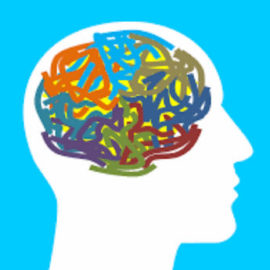

This article is an excerpt from the Shortform book guide to "The Happiest Baby on the Block" by Harvey Karp. Shortform has the world's best summaries and analyses of books you should be reading.
Like this article? Sign up for a free trial here.
Do you need tips on soothing your baby with colic? Do swaddling and swinging actually help? What medical conditions can cause colic?
In The Happiest Baby on the Block, Harvey Karp has a solution for babies with colic. He outlines why babies develop colic in the first place, and how caregivers can manage it.
Read below for a brief overview of Harvey Karp’s The Happiest Baby on the Block.
The Happiest Baby on the Block by Harvey Karp
Your baby won’t stop crying. The screams start up at any time of day or night and continue for hours, no matter what you do. The doctor says you just have to wait it out; your friends and family give conflicting advice, none of which works. You’re pretty sure you’re going to lose your mind. Luckily, you don’t have to: Harvey Karp’s The Happiest Baby on the Block offers a solution to your problem. He makes the argument that colic—crying for three hours or more a day—is most often caused by under- or overstimulation when your baby is still adjusting to life outside of the comfortable environment of the womb. His technique for soothing colic simulates the familiar and comforting sensations of the womb for your baby, helping them calm down.
(Shortform note: Regardless of whether or not you’re able to soothe your baby’s colic, take heart—doctors generally agree that by itself, colic is benign and doesn’t have any long-term effects. If you end up having to just wait it out, your baby won’t be worse off, though you’ll likely end up getting less sleep than you’d like.)
Part 1: Overstimulation and Understimulation
Karp argues that a majority of colic cases are caused by overstimulation and understimulation as your baby adjusts to the world outside of the womb. In Part 1, we’ll outline why too much or too little sensation causes colic, as well as Karp’s techniques for soothing an overstimulated or understimulated baby.
Why Too Much or Too Little Stimulation Causes Colic
Karp explains that newborn babies often cry incessantly because they’re unable to cope with all the new sensations around them. For the first three to four months of their lives, a baby’s nervous system is still relatively underdeveloped—Karp even refers to this period as the “missing fourth trimester,” suggesting all babies are born too early to be fully capable of handling the world outside of the womb.
In the womb, a fetus is exposed to consistent sensory information—steady noise levels, movement, temperature, and so on. On the other hand, the outside world can range from loud to quiet, busy to still, and cold to hot. In addition to external sensations, in the first few months, babies also experience internal sensations like digestion for the first time. Some babies are less sensitive to these changes in sensory information, don’t react as strongly to them, or are able to self-soothe and calm themselves back down. Other babies take a little longer to learn these skills: Instead, they respond to overstimulation or understimulation the only way they know how—crying a lot.
How to Activate the Calming Response
Karp’s soothing technique simulates the comfortable sensory “middle ground” babies experience in the womb. He argues that all babies have an instinctive “calming response” when they’re exposed to these sensations. This reflex evolved because while in the womb, a calmer fetus moves less and is therefore less likely to get into the transverse or breech positions (shifting onto their side or feet-down), which can cause dangerous complications during childbirth.
Karp strongly recommends that you always soothe your crying baby. His technique for doing so consists of five different methods (what he calls the Five Ss), each of which simulates a different part of being in the womb to activate the calming response. These techniques can and should be mixed, matched, and used simultaneously—every baby will respond to them differently, so you’ll have to learn which combination works best for your baby.
1) Swaddling
Karp explains that swaddling, or wrapping a blanket around your baby, simulates the constriction of the womb. In addition to soothing your baby, swaddling helps manage their movements and reactions so it’s easier to use the other parts of Karp’s technique. Karp says you should only swaddle your baby when they’re crying or sleeping—the rest of the time, they should be unwrapped and free to explore the world.
2) Side/Stomach
The second method Karp describes is holding your baby so that they’re on their side or stomach—this is the same position babies are in while inside the womb. Note that your baby should not sleep on their side or stomach, as this increases the risk of Sudden Infant Death Syndrome, or SIDS. Karp explains baby carriers and slings can keep your baby in this position.
3) Shushing
The third method Karp discusses is shushing, or providing some kind of white noise or ambient sound. This noise, he explains, helps simulate the relatively loud environment of the womb—namely the sound of blood rushing through arteries.
4) Swinging
Karp’s fourth method is swinging, or rhythmically moving your baby. While inside the womb, fetuses are jiggled, bumped, and rocked nearly constantly whenever their mothers move. Swinging helps simulate this motion to trigger a calming response.
5) Sucking
Finally, the fifth method Karp recommends is sucking—providing your baby with a pacifier to suck on. Babies tend to suck their own fingers frequently while in the womb, and so sucking activates the calming response. It’s also pleasant because your baby associates sucking with sating their hunger. Karp explains a pacifier is preferable to finger sucking, though, because it requires less coordination and is easier to wean your baby off of (since you can easily take it away).
Part 2: Underlying Medical Conditions
While Karp argues a majority of colic cases are due to over- or understimulation—and therefore can be addressed through the five methods in the previous section—he acknowledges there are some instances where underlying medical issues are responsible for colic.
In Part 2, we’ll cover medical and health-related causes of colic and Karp’s recommendations for addressing them.
How Underlying Medical Conditions Cause Colic
Karp explains that while many people and even some doctors assume all colic has a medical cause, only 5-10% of colic cases have an underlying medical cause. In these cases, your baby’s cries are signs of discomfort due to physical symptoms. Karp notes the most common physical ailments that cause colic: allergies and constipation. Let’s explore how to manage each in more detail.
Allergies
Allergies are responsible for 90% of medically-caused colic. Babies can be exposed to common allergens—such as cow’s milk, eggs, peanuts, tree nuts, wheat, soy, and fish—through breast milk depending on the breastfeeding parent’s diet.
Karp explains that babies with allergies tend to cry throughout the day and night. They may also have diarrhea, indicated by mucus in their stools. If you suspect your breastfed baby has an allergy, start keeping track of how long and how often they cry. Then, have the breastfeeding parent cut the foods listed above out of their diet for a week. If your baby’s crying stays the same, they likely don’t have an allergy. If your baby starts crying less, reintroduce small amounts of these foods to the parent’s diet one at a time to see if one makes your baby cry more—if one does, it’s likely their allergen.
Constipation
Karp explains that some cases of colic can be due to pain or discomfort from constipation. If your baby is bottle-fed, you can try improving their bowel movements by changing their formula mix or adding a tablespoon of water or prune juice to their formula once per day. Otherwise, you can try helping your baby coordinate their rectum by bicycling their legs, massaging their bottom, or inserting a greased thermometer about a half inch to an inch into their anus.
When to See the Doctor
In addition to the more common medical causes of colic, Karp also notes several signs that indicate you should take your baby to the doctor. Note that while these signs may indicate more serious issues, said issues are responsible for less than one percent of medically-caused colic. Karp recommends seeing a doctor if:
- Your baby pees fewer than five times per day and/or has dark yellow urine.
- Your baby gains fewer than four to seven ounces of weight per week (about a pound every two weeks).
- Your baby cries all day long without any periods of calm, or has a particularly shrill, high-pitched, sharp cry.
- Your baby is lethargic—they sleep twice as long as usual or have a weak suck.
- Your baby cries during or right after feeding.
- Your baby’s temperature goes below 97.5° or above 100.4°.
- Your baby vomits more than an ounce at a time, more than five times a day, or has yellow or green vomit.
Part 3: Poor Sleep
Finally, Karp notes that irregular or insufficient sleep can contribute to colic. In Part 3, we’ll explain why this is the case and go through Karp’s advice for improving a baby’s sleep.
How Poor Sleep Causes Colic
Karp explains that newborns tend to sleep between 14 and 18 hours a day, usually for two to four hours with an hour of time awake in between. While asleep, babies tend to cycle between lighter and deeper forms of sleep every hour—if something wakes them up during a deeper sleep cycle, they tend to have an easier time getting back to sleep. During a lighter cycle, though, a baby who has trouble self-soothing may start crying because they’re unable to get back to sleep.
Helping Your Baby Sleep Better
While the soothing techniques mentioned in Part 1—swaddling, holding on the side/stomach, shushing, swinging, and sucking—are often enough to help your baby sleep, Karp offers several additional tips for helping your baby get better, longer stretches of sleep:
- Feed your baby at the right time: You can help your baby sleep for longer stretches by ensuring they aren’t hungry at night. If your baby still seems hungry after their last meal before sleeping, feel free to feed them a bit more. You can also wake them up between 10 PM and midnight for a feeding to help them sleep through more of the night.
- Plan your baby’s naps: To help your baby sleep better, make sure to wake them up after they’ve napped for two hours—this ensures they’re awake for their next feeding cycle and will eat enough throughout the day. However, don’t let them stay awake too long during the day either. Otherwise, they’ll get used to only falling asleep when overtired. This will prevent them from learning how to sleep when they’re less exhausted.
- Help your baby learn to self-soothe: After you put your sleeping baby in their crib, wake them up for a few seconds by jostling them or scratching the bottom of their feet. This will help them learn how to get back to sleep by making them practice it regularly.

———End of Preview———
Like what you just read? Read the rest of the world's best book summary and analysis of Harvey Karp's "The Happiest Baby on the Block" at Shortform.
Here's what you'll find in our full The Happiest Baby on the Block summary:
- A helpful guide for parents who have babies with colic
- A theory about why babies develop colic, and how to manage it
- How to improve your baby's sleep cycles (and thus your own)






